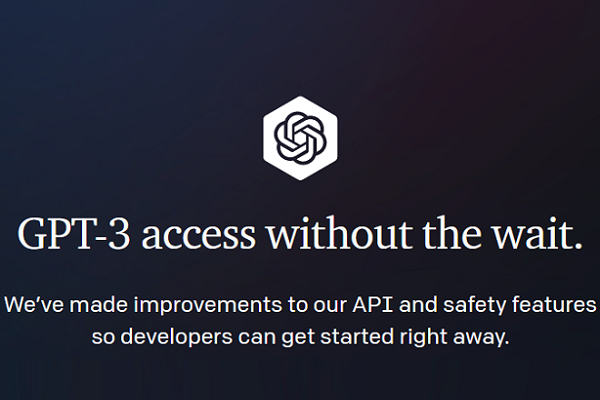OpenAI Ends GPT-3 API Waitlist
 OpenAI has made its GPT-3 API open to everyone, ending the application and waitlist system in place since the language model debuted last year. The company said it has improved The API’s technical and safety features to the point where individual access approval is no longer necessary.
OpenAI has made its GPT-3 API open to everyone, ending the application and waitlist system in place since the language model debuted last year. The company said it has improved The API’s technical and safety features to the point where individual access approval is no longer necessary.
GPT-3 API
Those wishing to download and use the GPT-3API have only to submit their email address, and they can start playing with the powerful language model. Since it was first announced, OpenAI upgraded the API to better understand human instructions and installed content filters to prevent much of the potential abuse of GPT-3-based products. Developers can also prototype more easily and test out templates and prompts, including the Codex, which instructs the AI in translating plain language instructions into computer languages.
“Tens of thousands of developers are already taking advantage of powerful AI models through our platform. We believe that by opening access to these models via an easy-to-use API, more developers will find creative ways to apply AI to a large number of useful applications and open problems,” OpenAI explained in a blog post about the decision. “To ensure API-backed applications are built responsibly, we provide tools and help developers use best practices so they can bring their applications to production quickly and safely. As our systems evolve and we work to improve the capabilities of our safeguards, we expect to continue streamlining the process for developers, refining our Usage Guidelines, and allowing even more use cases over time.”
Stunted for Safety
OpenAI generated a lot of interest after introducing GPT-3 last year. Microsoft almost immediately scored an exclusive licensing deal and has been integrating it into services like the low-code Power Apps programming tool and the new Azure OpenAI Service for its enterprise clients since. Microsoft also put the model into Github Copilot, which turns the AI into a pair programmer using the Codex system. The safety improvements also include new guidelines on what GPT-3 can be used for by developers. The company’s prohibitions now include adult topics, politics, violence, alongside hate speech and malware.
“Everyone and their brother wanted to try it last summer. If anything, they intentionally stunted growth by withholding it,” GPT-3 YouTube creator Bakz Awan told Voicebot in an interview. That they withheld it to make it a safer AI to benefit humanity, even though it meant making less money, in a way, that deserves to be commended.”
The GPT-3 API had built up a large waiting list. Even before opening the gates, OpenAI’s creation had helped startups secure funding deals. For instance, universal autocomplete startup Compose.ai and enterprise writing assistant startup Copy.ai raised $2.1 million and $2.9 million, respectively. There will be a lot more experimentation to come, Awan predicted.
“I have been playing around with fine-tuning a lot, and I’m excited to start making resources for people looking at GPT-3,” Awan said. “I want to make tutorial videos to introduce people to this world.”
Follow @voicebotai Follow @erichschwartz
Microsoft Scores Exclusive License to the Much-Hyped GPT-3 Language Model
Microsoft’s New Azure OpenAI Service Shares GPT-3 Language Model With Enterprise Partners
Sber Switches Salute Voice Assistants to Russian GPT-3 Model








